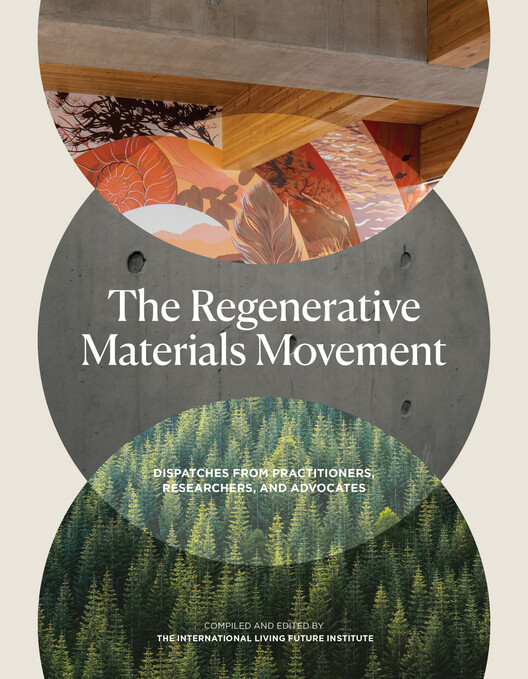Architects Must Address the Issue of Toxic Building Materials

This article was originally published on Common Edge.
y the time I was 17 years old, I had moved 11 times. Because of my own experience relocating from one place to another, I’ve spent the better part of the last several decades focused on making sure that everyone has a place to call home, that everyone enjoys the human right to housing. But it was not until my time at Enterprise Community Partners, a nonprofit focused on community development and affordable housing, that I realized the methods and materials we employ to realize that human right matter.

The building materials that are used to construct our homes absolutely make a difference to our human and planetary health. And while we can pick up a bag of chips or box of cereal and read the ingredients list to know what ingredients are inside, that is not possible when we rent or purchase a home. Much of my work now focuses on investing in opportunities that eliminate classes of toxic chemicals from use in our housing supply chain. And it’s a long supply chain that intersects with schools, offices, hospitals, and places of worship. There are tremendous openings to do better that could simultaneously promote worker health, community health, and planetary health—in one fell swoop, as I like to say—by ending the cycle of pollution inherent within our building supply system.
Related Article
Embodied Carbon in Real Estate: The Hidden Contributor to Climate Change
No one is immune to this pervasive problem of toxic chemical exposure in the built environment. In 2012, I leased an apartment in a building on the Upper West Side of New York City that was certified as a green building by the U.S. Green Building Council. During that time, I participated in a pilot study with the Environmental Defense Fund. I wore a bracelet that used wristband monitoring technology from MyExposome Inc., developed at Oregon State University, to detect hidden chemical exposures in my living environment. There were 27 other people in the study, and the technology could detect up to 1,400 chemicals. Much to my horror, my wristband detected 11 chemicals, including persistent, bioaccumulative, and toxic substances. They are as scary as they sound. Bioaccumulative chemicals persist in the environment for generations and build up in the body over time. One of these chemicals was a polycyclic aromatic hydrocarbon, which is an air pollutant linked to cancer. Others included phthalates, which are used to make plastics more durable, and flame retardant chemicals, often used in upholstery, clothing, and common cooking utensils, pots, and pans. I was not the exception: every participant’s wristband detected harmful chemicals. And while I write about this in my book, Gray to Green Communities, it was on a recent tour of work in North Minneapolis where this toxic reality hit home again.

While on this wonderful tour, which led us around public assets that the community was reimagining, I walked several blocks from a large park to the Mississippi River to enjoy a new overlook area. The initially pleasant walk became less so as we crossed a highway, where there was no longer a connected sidewalk. We began walking next to large trucks. Soon, my throat became dry and my eyes started itching, and I noticed a chemical taste in my mouth. When I finally looked around to understand why this was happening, I realized I was standing directly in front of a cement factory. The cement making process involves crushing and grinding the limestone and then heating the limestone with other materials to create “clinker.” The clinker is then mixed with gypsum to eventually create cement. We were inhaling the emissions from these processes and in this case, since the limestone was hauled in from other sites, we were also breathing in the exhaust from the trucks.
When we produce ingredients for materials that are harmful, the pollution is not contained in the building product but envelops the communities where it is produced. Many other people and natural spaces are exposed when the product is transported to the next facility. I remember, embarrassingly now, that I once thought it was elegant to take waste fly ash generated from the process of burning coal and store it in concrete. Coal ash contains mercury, cadmium, and arsenic, and it is often stored in unlined ponds, where these toxins can leak into groundwater. Utilizing it in concrete provides an alternative place to store toxic waste, and you do not need to use as much cement in the concrete. Yet everything about this scenario is wrong. It incentivizes the production of coal ash, and it continues to create opportunities for human exposure to known toxicants. There’s nothing green, safe, or healthy about incorporating hazardous byproducts within building materials.
There is a buzz among environmental philanthropists right now around “decarbonization.” This talk amounts mostly to an interest in removing oil and gas-burning HVAC systems, water heaters, and stoves. While of course this step is necessary, we cannot truly decarbonize buildings, including our homes, until we take a comprehensive approach that explores the many ways that pollutants, namely greenhouse gasses and plastics made from fossil fuels, move into all aspects of the built environment. This survey must include everything from flooring and other surfaces to pervasively used materials like polyvinyl chloride (PVC) and concrete.
There is no dispute that we must increase the supply of safe housing that is affordable to people of all incomes everywhere across the U.S. If we do this without considering material health, we will accelerate planetary and human suffering while locking in carbon emissions, making it virtually impossible to thwart catastrophic consequences from climate change. And because toxic classes of chemicals accumulate in buildings, when an extreme weather event destroys whole neighborhoods, it makes it dangerous to clean up and rebuild. As Henry David Thoreau famously wrote, “What is the use of a house, if you haven’t got a tolerable planet to put it on?” In addition, what’s the use of a house if it creates intolerable conditions for the communities that produce the ingredients and products used in its construction? And shouldn’t homes shelter us from persistent, bioaccumulative, and toxic chemicals?
High-Impact Materials

Some materials have a greater impact when it comes to their emissions and pollution impacts. According to Architecture 2030, just three materials—concrete, aluminum, and steel—are responsible for 23% of global emissions and the associated pollution and health impacts. Thankfully, concrete is getting some attention through the U.S. federal government’s Buy Clean Initiative, a procurement policy that takes into account the carbon and pollution impacts of materials used in federal projects. The government is prioritizing low-carbon procurement in four categories: steel, concrete, asphalt, and flat glass, and will use Environmental Product Declarations (EPDs) to compare products.
As we rush to do all we can to avert catastrophic impacts from climate change, and as we simultaneously pay attention to planetary boundaries, we must do better when it comes to the extraction, production, and installation of materials we are specifying, purchasing and using in our homes and buildings. To help stop the cycle of pollution and to avoid making some communities green at the expense of making other ones gray, we must consistently ask the questions: What is in this product? And where do the ingredients come from?
Already today, we have access to the science that provides evidence about the impact of these toxic classes of chemicals on our health. We know that our “gray” housing practices are making us sick, and our reliance on fossil fuels is choking our planet. Fortunately, comprehensive and holistic green housing is achievable and is proven to reduce carbon emissions while boosting health and economic outcomes. We can refer to the work of organizations like the Healthy Building Network to make better choices and avoid the Red List of known carcinogens. In addition to the Healthy Building Network, JPB is supporting other organizations involved in this work, including the Green Science Policy Institute, BlueGreen Alliance, Healthy Product Declaration Collaborative, and the Healthy Materials Lab at the Parsons School of Design. I am most excited by what knowing better means for new jobs, for inventing new products that can be cleanly manufactured in the U.S., and for how these choices can help end the cycle of pollution because they can be cleanly reused, repurposed, or even recycled.
While we do not have bracelets for buildings to make visible what is currently unseen, to steal the tagline of Healthy Building Network, we do know better, so let’s do better together. Let’s end the bioaccumulation of harmful chemicals in our bodies, our communities, and in our atmosphere. Architects and designers can use their purchasing power to demand better materials and products, and we can organize our friends and neighbors to demand better. Let us continue innovating to drive down the price and increase the effectiveness of green materials. The health and well-being of everyone and the planet depend on it. Let us act like this is true, if not for us, then for our children and our children’s children.
This essay is an excerpt from The Regenerative Materials Movement: Dispatches From Practitioners, Researchers, and Advocates (The International Living Futures Institute).




